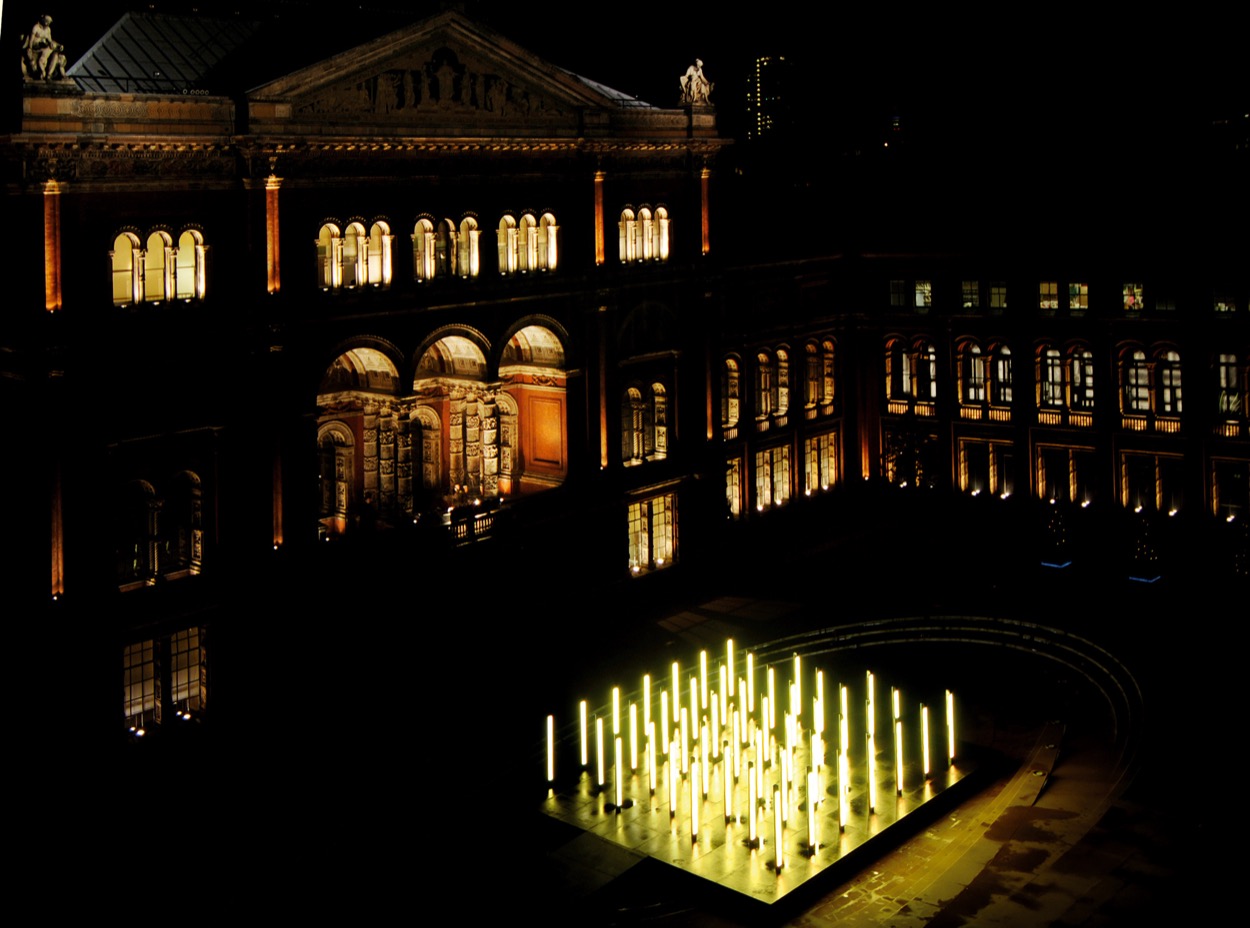What is your artistic background?
My background is in both fine art and design. I studied fine art sculpture and communication design in parallel on a joint honours course at Camberwell College of Art in London. For half the week, I would be in the sculpture studios and the other in the design departments. It was the late 1990s when everything seemed to be going from an analogue way of doing things to a digital one. This was the beginning of me traversing different disciplines and having a pretty broad interest in creative approaches, something that’s never really changed.
The first question is obviously, about your project, the UVA. I know that you’re the founder so tell us, how did it all happen?
I have to think back now because it’s approaching the 20-year mark since I founded UVA with my then co-founders, Chris and Ash. It all came about in quite an organic way. It wasn’t planned, although, for a long time up until that point, I had a desire to start a creative space for like-minded people. In reality, UVA was born from working on projects with friends and then formalising it into an official organization. When I left college, I gravitated towards working in the music industry, designing record sleeves and scenography for performing artists. In a short amount of time, I worked with some established artists, which eventually led to the conversation with Massive Attack. I heard that they were going on tour and were looking to do something visually ambitious. So I managed to get a meeting with the band through someone I knew was working with them. When I met Robert Del Naja from the band, he had some initial ideas and directions he was interested in. We chatted for a while over some beers and found out we had many things that resonated in terms of visual arts. So he said: Well, you know, go and think about some designs, then we’ll take it from there. So that’s what I did. I was young and a huge fan of the band; it felt like a massive responsibility, but I knew it was an opportunity to do something important because the band were known for their pioneering visual identity. I liked the idea of creating a show that would be visually different every day, a show that could almost communicate with the audience. I wanted to express the overwhelming feeling that one gets from living in the age of information, and this was in 2003 before social media had taken any significant traction. I didn’t want to use imagery, only text and numerical data, and I wanted it to be a very pure and informational experience. So when I met Massive Attack again and presented the idea, they were excited about it and said, yeah, sounds great. Let’s do it. That’s where Chris and Ash came into the picture, I had no idea how I would make what I proposed, and I needed some serious technical help with the programming and engineering required to realise a vision like it. Somehow, we managed to pull off the show, and it was considered groundbreaking at the time. What surprised me in the creative process was how collaborating with programmers and engineers could lead to outcomes that I never knew were possible. So that was the beginning of UVA, and in principle, the collaborative ethos is still evident today, but with a much broader family of practitioners.
Then you have decided to stop touring with Massive Attack and begin to focus on other projects?
We collaborated with Massive Attack for 15 years, not just for the stage but also for installations, films, and other things. The success of our work with the band led to other opportunities, working with some of the biggest bands in the world, such as Jay Z and Red Hot Chili Peppers, U2 and many others. At times, it was enjoyable to work on these huge productions, but unlike Massive Attack, it felt a little bit like a layer of decoration, let’s say, and the ideas weren’t quite as interesting for me in terms of subject matter. A few years into UVA, we started to explore the potential of a different way of experiencing a live performance and bringing what we’d learned for the stage into the public space. The most significant project at this junction of my practice was the Volume work we created for the V&A Museum back in 2006.
What happened there? Was this your first independent exhibition?
It wasn’t the first one, but I would say it’s the first large scale artwork that started the trajectory towards working more as an art practice with commissions from institutions. The V&A offered us an opportunity to create an artwork for the John Madejski Garden. It was a temporary commission for three months. What was interesting about this project was that everything we learnt from approaching stage performance was applied to it, but without having a traditional stage or performer. The artwork consisted of 50 light columns arranged in a 10×10 meter grid, each with a single speaker. We commissioned Massive Attack to make a 50-channel sound field. The light and sound were manipulated in relation to people’s proximity, creating ever-changing compositions. So it was like we were dissolving the line between the audience and the stage, and allowing the audience to be performers. People would also watch the stage from the perimeter, so it opened up a an interesting space that sits between performance, art and architecture, which is the thing that we’ve continued to explore and has been the main focus for many of our installation works. I call them performative or transitional spaces.
 https://www.nastymagazine.com/wp-content/uploads/2024/07/ComfyUI_temp_vplus_00001_.jpg
1066
1600
Editor Nasty
https://www.nastymagazine.com/wp-content/uploads/2015/02/new-logo-basker-WHITE4.png
Editor Nasty2024-07-01 11:50:342024-07-01 13:52:18Vladimir Sorokin / The Future of Russian Dystopia
https://www.nastymagazine.com/wp-content/uploads/2024/07/ComfyUI_temp_vplus_00001_.jpg
1066
1600
Editor Nasty
https://www.nastymagazine.com/wp-content/uploads/2015/02/new-logo-basker-WHITE4.png
Editor Nasty2024-07-01 11:50:342024-07-01 13:52:18Vladimir Sorokin / The Future of Russian Dystopia
















